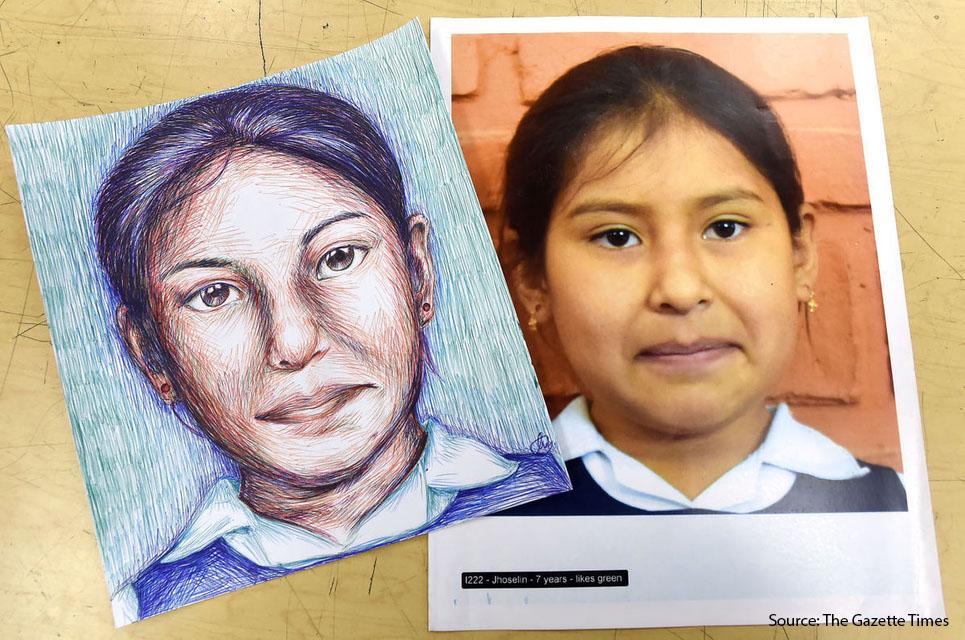Last month, the atrium stage was covered with sugar, salt, and hardworking art students; students in Studio Art 1 and 2 have been working on the Memory Project, an annual project the SIS art department organizes. The Memory Project is a non-profit organization that promotes art students and teachers from all around the world to create and donate portraits to children from underprivileged circumstances. The SIS art students and teachers found this to be a particularly significant experience both as artists and global citizens.
Specifically, the Memory Project receives photographs of children in challenging situations from global charities and sends these photos to teachers and students who have volunteered to participate. After the students create portraits based on these photographs, the portraits are delivered back to the children.
“The project’s main objective is to help the underprivileged feel valued by someone from the other side of the world and recognize his or her self importance,” said Lyme Cho (10), Studio Art 1 student. “I felt that it was rewarding that our artwork would have a significant purpose. It was a really special experience to be a part of making a treasured memory for the children.”
This year, the Studio Art students took on creating the portraits with a unique challenge; instead of using the traditional paint and brush, they used unconventional materials such as sugar, salt, and coffee. According to the students, this was a challenging and newexperience.Because the salt and sugar were not stuck to the paper, a single gust air or accidental contact often ruined artwork.
“Other than the Memory Project itself, the focus of the assignment was using unusual materials,” said Eddie Ko (11), a student in Studio Art 2. “It was definitely difficult because I wasn’t used to using salt for art. But at the same time, it was cool because we don’t usually branch out or experiment a lot like we did with this project. It was a challenge, but a fun challenge.”
Yet according to Jane Mitchell, the Studio Art teacher,this fragility of their artwork also had a significant meaning behind it.
“We looked at an artist called Vik Muniz who has lived in a community on a rubbish dump and made portraits out of the garbage there. We were inspired by this artist to make our portraits out of salt, sugar, and coffee,” said Ms. Mitchell. “Students working in the atrium were creating portraits out of salt that was not attached to the paper, making the artwork very temporary. We did this to reflect the temporary nature of the lives of the children living in unsafe homes. The fragility of the material also reflects how fragile these children are from the effects of natural and manmade disasters.”
Although the project was a challenging assignment for the art students, it nevertheless added a deeper layer of purpose to their work. The students found that it was worth giving up their breaks—spent crouching over and revising their constantly ruined artwork—for creating artwork that would bring a smile of confidence and self-esteem to a child’s face.

